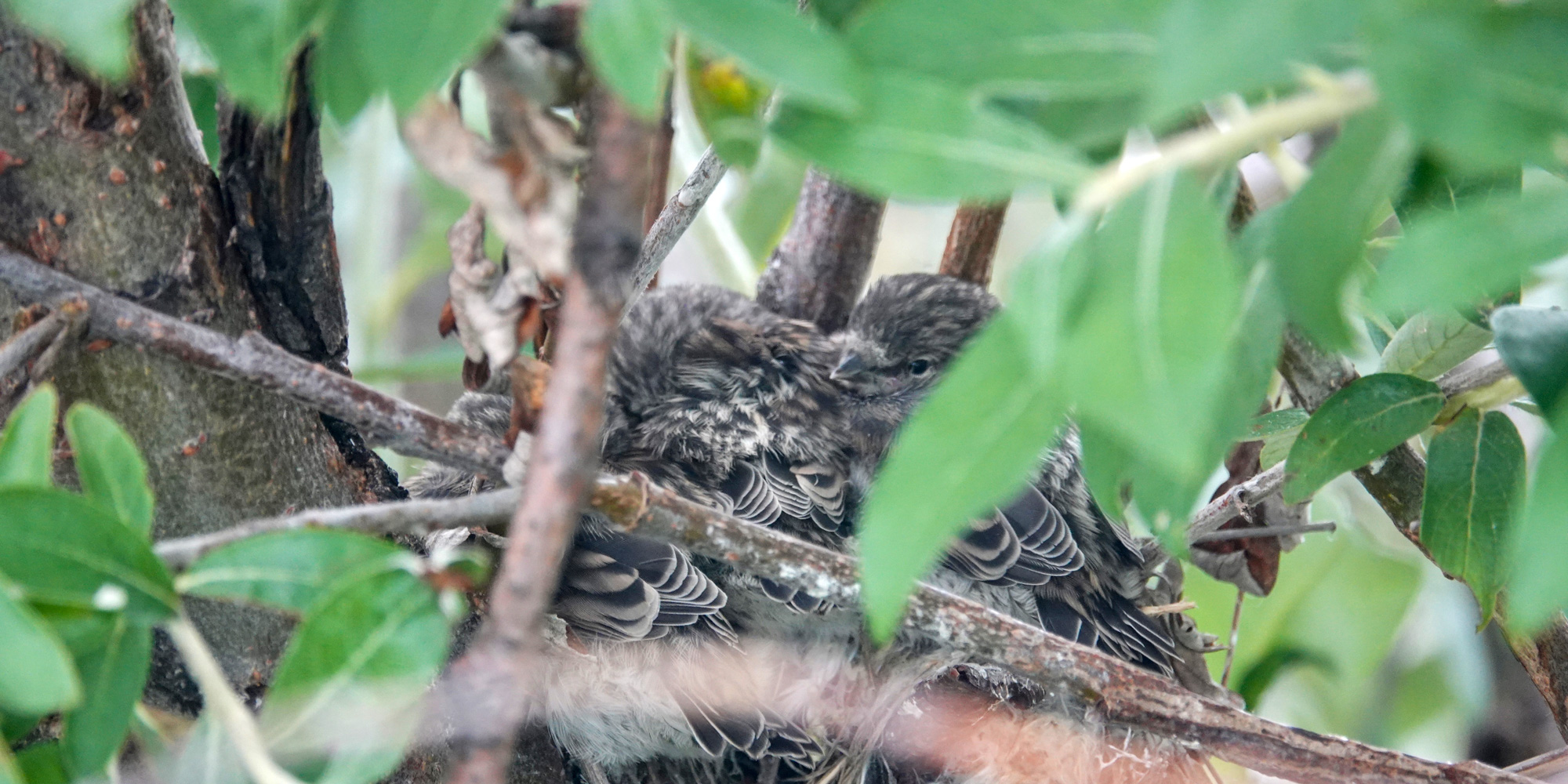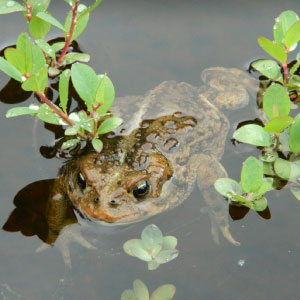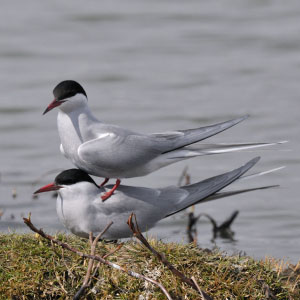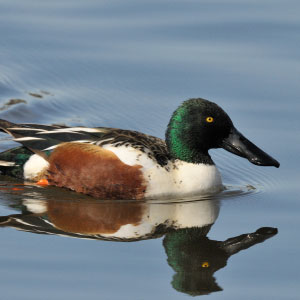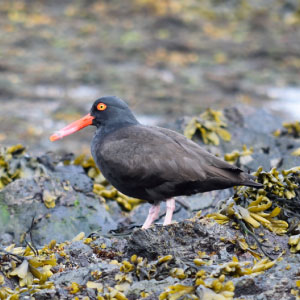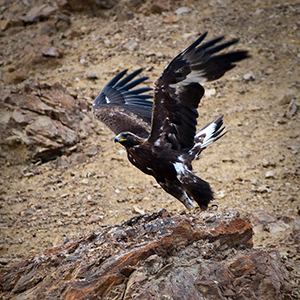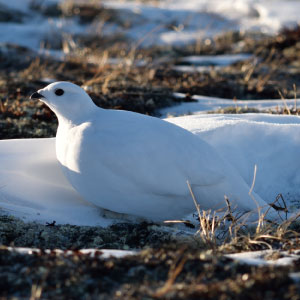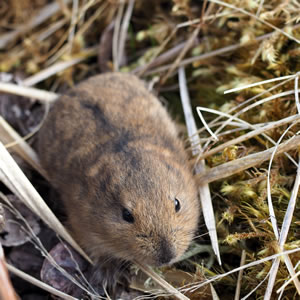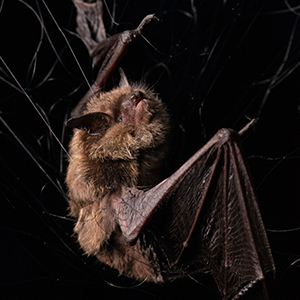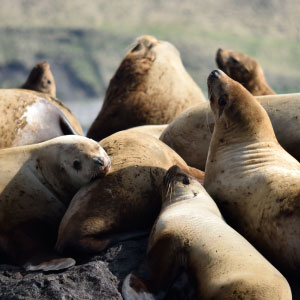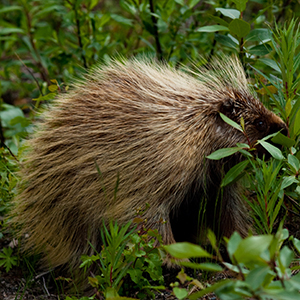The Alaska Species Ranking System (ASRS) is a prioritization tool that assesses the conservation status of native vertebrates in Alaska. It was developed in collaboration with the Alaska Department of Fish and Game’s Threatened, Endangered, and Diversity (TED) Program. The goal of the ASRS is to provide detailed information on the conservation needs of Alaska’s wildlife to help the TED Program and their partners set priorities for wildlife conservation and inform Alaska’s State Wildlife Action Plan (SWAP). The ASRS provides an objective way to rank all native vertebrates through a lens that is specific to Alaska, which helps to identify those that require the most focus in the SWAP. Such taxa are called Species of Greatest Conservation Need (SGCN).
The ASRS was initially developed in the mid-2000s. In 2012, the first version of the ASRS was released. Ranks have been regularly updated since then and there have been changes to the ranking system as well. In 2022, staff at ACCS and ADF&G used updated ranks to assess the conservation status of small mammal species in Alaska. In 2025, the ranking system was revised; the ranks shown here reflect the most recent changes. Please fill out a Data Request Form if you would like a copy of the ASRS assessment for one or more taxa.

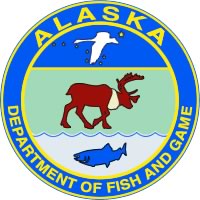
View By Species Group
Search By Species Name
| Common Name | Scientific Name | Color Rank | Numerical Rank | Status Score | Biological Score | % Global Population |
|---|---|---|---|---|---|---|
| American Golden-Plover | Pluvialis dominica | Yellow | IV | 0 | -33 | 25-74% |
| Bar-Tailed Godwit (baueri) | Limosa lapponica baueri | Red | I | 10 | -12 | Endemic |
| Black Oystercatcher | Haematopus bachmani | Orange | III | 0 | 11 | 25-74% |
| Black-Bellied Plover | Pluvialis squatarola | Yellow | IV | 0 | -20 | Unknown |
| Bristle-Thighed Curlew | Numenius tahitiensis | Yellow | IV | 0 | -22 | ≥75% |
| Buff-Breasted Sandpiper | Calidris subruficollis | Red | I | 12 | -12 | <25% |
| Dunlin | Calidris alpina | Red | II | 5 | -30 | 25-74% |
| Dunlin, Arctic | Calidris alpina arcticola | Red | I | 16 | -16 | ≥75% |
| Dunlin, Pacific | Calidris alpina pacifica | Blue | V | -11 | -16 | Endemic |
| Gray-Tailed Tattler | Tringa brevipes | Orange | III | 0 | -5 | <25% |
| Greater Yellowlegs | Tringa melanoleuca | Yellow | IV | 0 | -36 | 25-74% |
| Killdeer | Charadrius vociferus | Red | II | 6 | -20 | <25% |
| Least Sandpiper | Calidris minutilla | Red | II | 6 | -33 | 25-74% |
| Lesser Yellowlegs | Tringa flavipes | Red | II | 10 | -36 | 25-74% |
| Long-Billed Dowitcher | Limnodromus scolopaceus | Yellow | IV | 0 | -36 | Unknown |
| Marbled Godwit (beringiae) | Limosa fedoa beringiae | Orange | III | 0 | 4 | Endemic |
| Pacific Golden-Plover | Pluvialis fulva | Yellow | IV | 0 | -30 | <25% |
| Pectoral Sandpiper | Calidris melanotos | Red | II | 10 | -30 | 25-74% |
| Red Knot, Pacific | Calidris canutus roselaari | Red | I | 6 | 2 | 25-74% |
| Red Phalarope | Phalaropus fulicarius | Red | II | 6 | -36 | 25-74% |
| Red-Necked Phalarope | Phalaropus lobatus | Red | II | 6 | -33 | 25-74% |
| Red-Necked Stint | Calidris ruficollis | Orange | III | 0 | 2 | <25% |
| Rock Sandpiper, Aleutian | Calidris ptilocnemis couesi | Yellow | IV | 0 | -24 | Endemic |
| Rock Sandpiper, Bering Sea | Calidris ptilocnemis tschuktschorum | Yellow | IV | 0 | -24 | ≥75% |
| Rock Sandpiper, Pribilof | Calidris ptilocnemis ptilocnemis | Orange | III | 0 | 4 | Endemic |
| Ruddy Turnstone | Arenaria interpres | Yellow | IV | 0 | -34 | <25% |
| Semipalmated Sandpiper | Calidris pusilla | Blue | VI | -6 | -40 | <25% |
| Short-Billed Dowitcher (caurinus) | Limnodromus griseus caurinus | Red | II | 6 | -36 | ≥75% |
| Solitary Sandpiper (cinnamomea) | Tringa solitaria cinnamomea | Blue | VI | 3 | -24 | ≥75% |
| Spotted Sandpiper | Actitis macularius | Blue | VI | -6 | -37 | 25-74% |
| Stilt Sandpiper | Calidris himantopus | Red | II | 6 | -24 | <25% |
| Surfbird | Calidris virgata | Yellow | IV | 0 | -17 | ≥75% |
| Upland Sandpiper | Bartramia longicauda | Yellow | IV | 0 | -30 | <25% |
| Wandering Tattler | Tringa incana | Yellow | IV | 0 | -24 | 25-74% |
| Western Sandpiper | Calidris mauri | Red | II | 6 | -24 | ≥75% |
| Whimbrel | Numenius phaeopus | Yellow | IV | 0 | -36 | 25-74% |
| Wilson's Snipe | Gallinago delicata | Yellow | IV | 0 | -36 | <25% |
| Wood Sandpiper | Tringa glareola | Orange | III | 0 | -1 | <25% |
Looking for more?
Range maps are available from the Wildlife Data Portal (compatible with Google Chrome and Microsoft Edge). References cited in the Conservation Reports can be viewed on our online reference library. Can’t find the report you’re looking for? Reach out to us and we’ll do our best to help.
